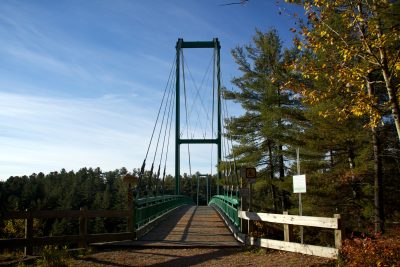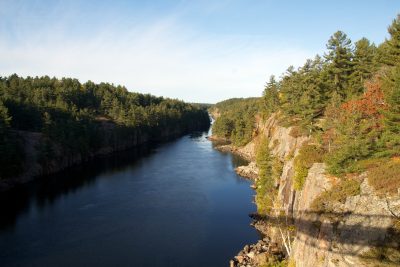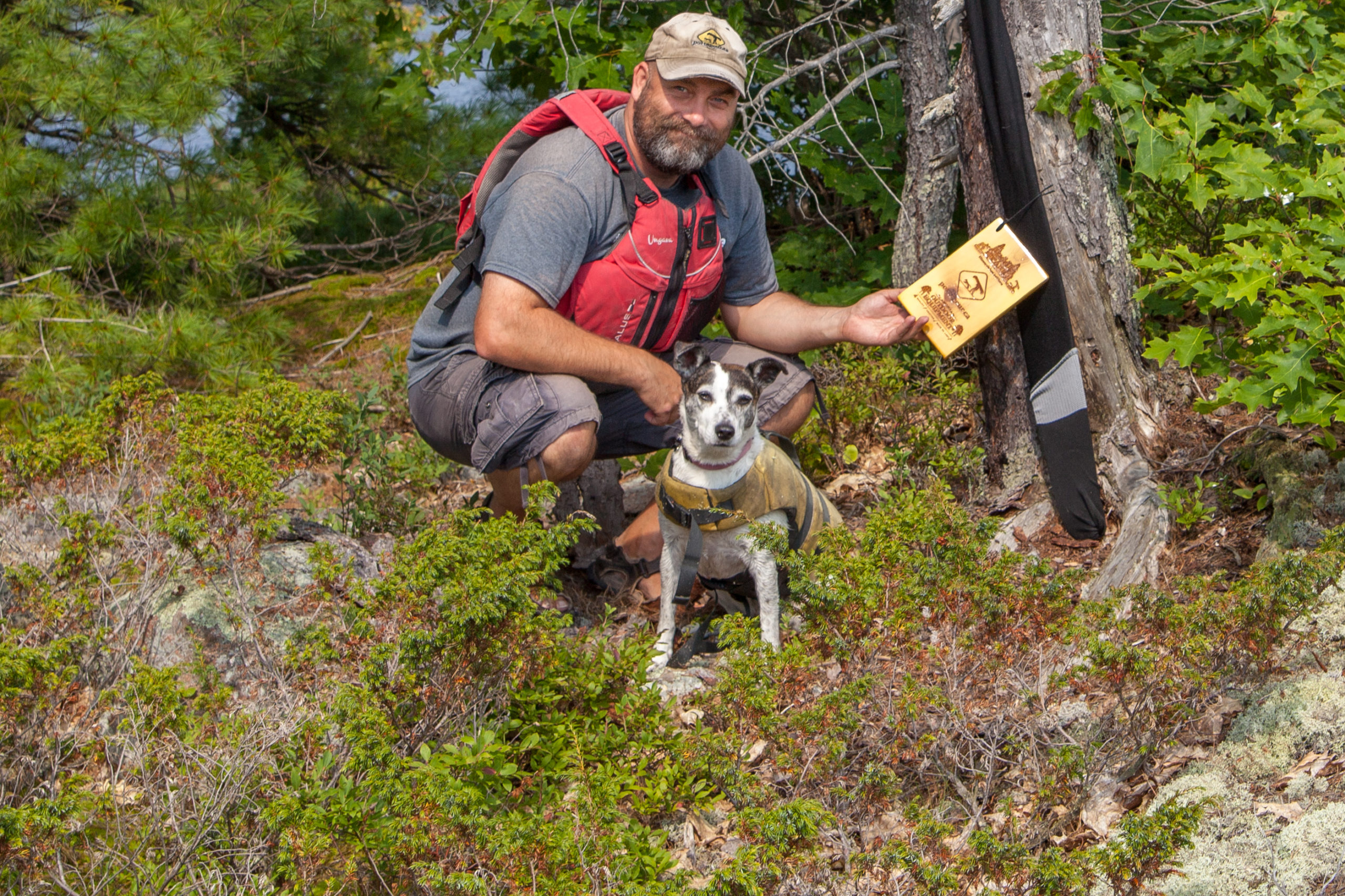Wandering Around Out There With A Canoe On My Head
Wandering Around Out There With A Canoe On My Head
So you’ve found a place that seems great for paddling. How do you keep it that way? How do you protect an area for paddling?
One method is by raising awareness. Throughout the year there are plenty events on major rivers and waterways to raise awareness and interest in protecting those areas. Basically, the idea is to have a big event where a bunch of people paddle around reminding people of the importance of protecting our waters. They raise funds, get sponsors and hopefully a little media attention. It’s very effective. However, there is a more effective way to protect paddling areas and canoe routes than by these big events: Use them. That’s where Paddling it to Protect it comes in.
The Evolution of an Area’s Purpose
Ever wonder why activities are supported in certain places? How somewhere is seemingly reserved for a specific activity? Here’s how it starts: One person or a few people find an area suited to their activity. They perform said activity. Other people see the area as somewhere suited to the activity, then word spreads until the small group of people turn into a bunch of people. All these people start make accommodations for the activity in the area, improving the ability to use the area. That gets the attention of the local governments, who start building infrastructures to support the activity. Suddenly, that’s what the place is for, and for all anyone remembers, it’s what it’s always been for.
The next step is that – eventually – the area becomes protected development that would hinder the area for the activity. In terms of paddling, think of Algonquin, Killarney, Quetico, Temagami. These are all places that support canoeing. They’re protected areas (for the most part), have established canoe routes, published maps, outfitters, docks, trail markers, maintained portages, and any number of other things to encourage using the area for canoeing. Think also of places like the Grand River in southern Ontario, the Ottawa and Mattawa on the Ontario/Quebec border, the Rideau area. These places are pretty urbanized, but still have a plenty of support for canoeing. They are all used to promote the province’s travel industry, encouraging people to get out there and paddle. What started it all was people paddling in that area – and more importantly – continuing to do so.
Why it works
So why does this work? I’m no expert on the matter, but I’ll give a quick little run down: For one thing, the different levels of government want to encourage people using their land, because that’s how government money gets generated and then spread around. Provincial/state and federal governments trickle money down to the areas that are being used by people, for example to encourage tourism in the area. Municipal governments are also trying to get funds to promote and support the areas for the same reason, but also are a little more focused on economic development – encouraging people and businesses into the area. Again, tourism – for our purposes includes paddling – is good for business, and if protecting and supporting an area for paddling is good for tourism, it means paddling is good for business.
So if you want to protect an area for great activities like canoeing, portaging, camping, hiking, backpacking, the key is to go out and do it. If you want to protect it, paddle it.
The Alternative
The problem – and a big one – is that this concept works for everything, not just paddling. Think of all those places that are littered by cottages. Why can they squeeze so many in some really great places out there? Because people went and built cottages in a great spot (and who can blame them really), and so the local governments felt the economic impact and supported the activity. They built roads out there, then better ones. They re-zone; they build up infrastructure to support it. Then suddenly you get “cottage country”.
Okay, so that’s not a real big deal, I suppose, and in some cases it supports the outdoors (in a way). What about snowmobile and ATV trails? There are a great number of trails scattered throughout Ontario, and more and more of them every season, and with them comes accommodations, stores, outfitters, and guides to help out. It’s great for tourism, and for the most part I support them. Boating is another. When an area is used for it, up comes docks, boat launches and marinas. For all these activities, they support the outdoors, reserving the land within the area from more harmful development, so again it’s good, for the most part.

Of course when it comes to canoeing, often these activities can be in conflict with paddlers. A river filled with cottages leaves little area for public docks, portages and trails. Also, as a paddler I’m not a really big fan of ATV trails. In some ways you can say that it supports portaging, as trails are maintained because they’re being used by ATV enthusiasts – and as an optimist I’ll use the term – for the most part. Unfortunately while the majority of ATVers may be using the trails responsibly, it just takes a few to really do a lot of damage. A great example is a trail used to carry over a series of rapids along the Magnetawan river. It’s a 2.2km trail that is also used by local camps and ATVs. The trail has been turned into a mucky and grooved trail by all the traffic. The vicious circle ensues as the more the trail is abused, the muddier it gets, which makes it more susceptible to ATV abuse, with grinding wheels easily ripping up the wet ground. The worst part is that once it gets bad, people try to drive around the problem areas, widening the trail, only to muck up those areas after that, and so the circle continues.
When I complained about this, the retort I received was: “What do you expect? It’s an ATV trail”. “It’s not,” I replied, “It’s a portage.” According to the local government, they would probably disagree with me. Why? Because people use it as an ATV trail. If more people portaged, they’d agree with me instead. See how that works?
Use it, but use it right
 This of course brings up another point: When you use the area, you must make sure to use it responsibly. Practice leaving no trace: Use designated trails and campsites, stay away from ecologically sensitive areas, and bring out everything you brought. If we do it right, paddling in an area will help the conservation of the area as well. This is key. The exception to the use-it-or-lose-it rule is when an activity is harming the area. I don’t see this being a problem with paddlers though. We tend to be more concerned with getting to the untouched lands and want to keep it that way. If you really think about it, paddling an area not only protects it for paddling, but it protects it from a lot of things.
This of course brings up another point: When you use the area, you must make sure to use it responsibly. Practice leaving no trace: Use designated trails and campsites, stay away from ecologically sensitive areas, and bring out everything you brought. If we do it right, paddling in an area will help the conservation of the area as well. This is key. The exception to the use-it-or-lose-it rule is when an activity is harming the area. I don’t see this being a problem with paddlers though. We tend to be more concerned with getting to the untouched lands and want to keep it that way. If you really think about it, paddling an area not only protects it for paddling, but it protects it from a lot of things.
What’s worse
Now think about places that are known for being areas for more ecologically nefarious things. Logging, mining, industrial areas are where they are for obvious reasons, that they accommodate their needs. But how often have you heard the argument that you can’t stop insert-industry-here because that’s a insert-industry-here place – they’ve always insert-industry-here there. If we used those areas for something else, the purpose for that area would be something different. Imagine saying “You can’t log or mine there, it’s a paddling place – they’ve always paddled there.”
So what’s your point?
My point is very simple. If you want to protect an area for paddling, paddle it. Get your friends to paddle it. Refer to it as a place to paddle. Keep the place a good place to paddle. Rinse and repeat.
Tell me about it
Know of an area that’s been protected by paddling? Know of an area that’s been set aside for other activities by people just going and using it, good or bad? I’d really like to hear some stories, so tell me about it in the comments.

Session expired
Please log in again. The login page will open in a new tab. After logging in you can close it and return to this page.